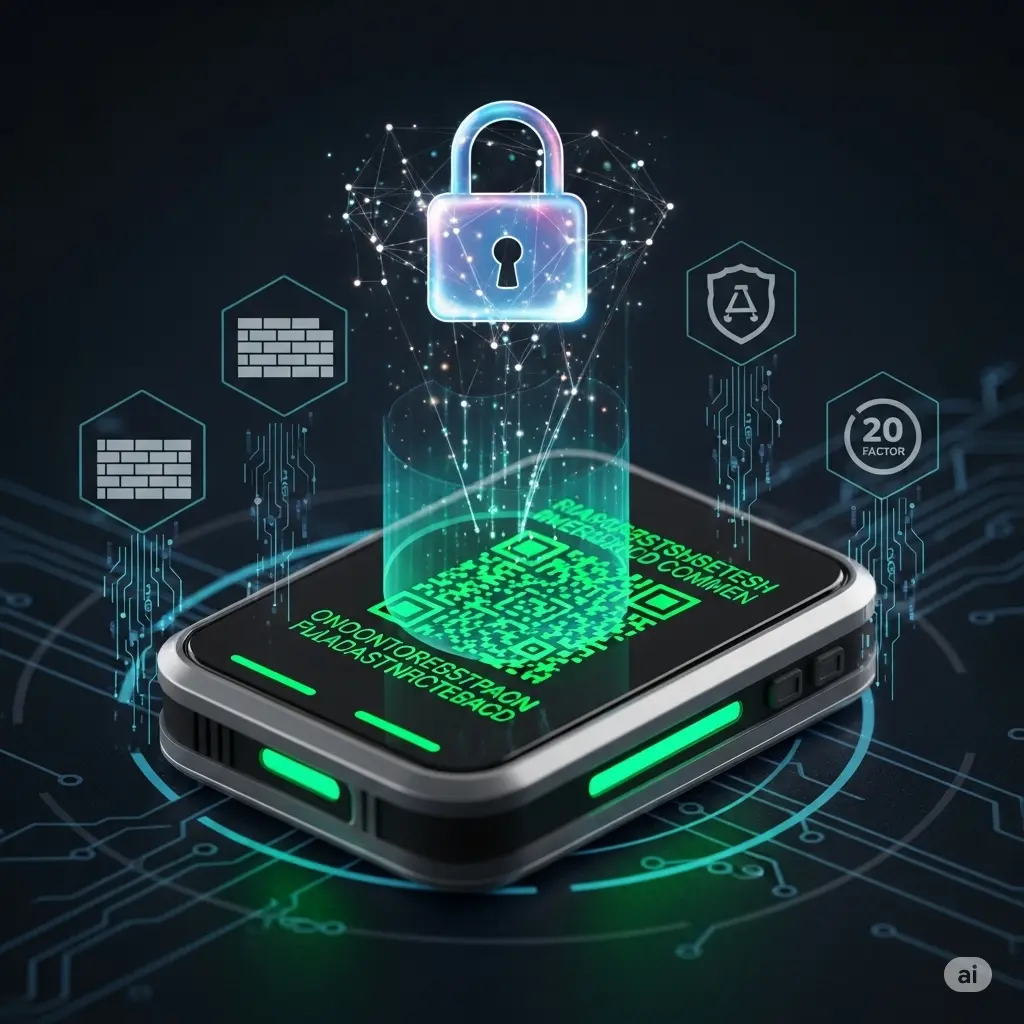Ultimate Secure Crypto Wallet That Guarantees Total Asset Safety
In an era where digital assets are booming and headlines buzz with stories of hacks, scams, and lost keys, Secure Crypto Wallet isn’t just a phrase it’s a lifesaver. For investors and enthusiasts vying to preserve their crypto fortunes, knowing how to safeguard their coins is mission‑critical. With increasing adoption of cryptocurrencies in sports sponsorships, NFTs, and Web3 platforms especially through Global Crypto Sports and other real‑time news channels security awareness has never been more urgent.
A truly ultimate secure crypto wallet can mean the difference between peace of mind and financial disaster. This guide walks you, step by step, through understanding wallet types, evaluating risks, and selecting the right solution for guaranteed total asset safety.

1. Key Crypto Terms Explained
Before diving in, let’s ensure you’re on firm ground. Here are simple, beginner-friendly definitions of pivotal terms:
- Blockchain: A decentralized ledger where transactions are grouped in blocks and chained immutably. Think of it as a digital logbook that everyone can audit but no one can unilaterally change.
- DeFi (Decentralized Finance): Peer-to-peer financial services lending, borrowing, trading built on blockchain, eliminating intermediaries like banks.
- Web3: The next-generation internet, powered by blockchain, where you own your data, digital identity, and assets, instead of centralized platforms.
- Hot Wallet: A wallet connected to the internet—ready to transact quickly, but with higher exposure to online threats.
- Cold Wallet: A wallet stored offline—often a hardware device or paper—providing strong resistance to hacking.
- Hardware Wallet: A physical device (like a USB‑style unit) that stores your private keys securely offline.
- Mobile Wallet: An app on your smartphone that holds your crypto keys—great for on-the-go use.
- Decentralized Wallet: A wallet where you, not a third party, control your keys—meaning true ownership, but also full responsibility.
- Wallet Backup: Recovering your wallet using a seed phrase or backup file is essential if your device is lost or stolen.
2. Types of Crypto Wallets: Definitions & Comparisons
Let’s break down the major wallet types so you can identify which qualifies as an ultimate secure crypto wallet.
2.1 What Is a Cold Wallet?
A cold wallet keeps your private keys completely offline. Examples:
- Paper Wallet: Printed keys written on paper. Cheap—but fragile (fire, water, loss).
- Hardware Wallet: A device like Ledger Nano or Trezor that isolates keys offline until a transaction is signed.
Cold wallets offer superior security due to no direct internet exposure.
2.2 What Is a Hot Wallet?
A hot wallet resides online—mobile, desktop, or web-based. Examples:
- Mobile apps like Trust Wallet.
- Web wallets like MetaMask.
These are convenient for frequent trading or DeFi access but inherently riskier because they’re connected to the internet.
2.3 Understanding Hardware Wallets
A hardware wallet is a specialized cold wallet with built-in screens and secure chips. Key advantages:
- Your private keys never leave the device.
- Transactions are physically confirmed on the device.
- Supported by major blockchains.
Popular choices include Ledger, Trezor, and newer Air‑gapped devices.
2.4 Mobile Wallets and Desktop Wallets
- Mobile Wallet: Great for accessibility and quick DeFi swaps.
- Desktop Wallet: Software on a computer—can be lighter-client (less secure) or full-node (more technical, more secure).
They balance convenience with varying levels of security.
2.5 Decentralized Wallets vs Custodial Wallets
- Decentralized Wallets: You hold the keys—you’re the bank. This requires a safe backup.
- Custodial Wallets: A third party (like an exchange) handles keys—more user-friendly, but risk of loss if the custodian fails or is hacked.
The ultimate secure crypto wallet is decentralized to avoid third‑party risk.
3. Why Security in a Crypto Wallet Is Non‑Negotiable
- Immutable losses: Once crypto is stolen, it’s almost impossible to recover.
- Growing threat landscape: Phishing, malware, SIM swaps, and exchange hacks are rampant.
- You are your bank: Crypto recovery is fully in your hands; mistakes are costly.
- Web3 integration: As sports platforms and NFTs increasingly integrate crypto (via Global Crypto Sports coverage), your wallet must defend sophisticated DeFi interactions.
4. Real‑World Examples & Case Studies
Case Study: Mt. Gox and the Cost of Custodial Failure
In 2014, Mt. Gox, once the largest Bitcoin exchange, lost 850,000 BTC—largely due to centralized mismanagement. This highlights the danger of trusting third-party custodial services.
Case Study: Secure Storage Pays Off
A prominent investor with millions in crypto held 90% in a hardware wallet. A phishing attack targeted his exchange account—he retained most assets because his main holdings were offline. This real-world outcome underscores the value of cold wallet security.

5. Pros & Cons: Wallet Types & Practices
| Wallet Type / Practice | Pros | Cons |
|---|---|---|
| Hardware (Cold) Wallet | Offline, extremely secure, user-controls private keys | Cost, learning curve, physical risk (damage, loss) |
| Hot Wallet | Easy trading, quick access, DeFi integration | Online threats, phishing, malware |
| Paper Wallet | Cost-effective, air‑gapped | Fragile, no encryption, not user-friendly |
| Mobile/Desktop Wallet | Convenient, often free, DeFi/mobile-ready | Device-level security risks |
| Custodial Wallet | Easy onboarding, customer support | Third-party risk, no real ownership |
| Decentralized Wallet | Full control, trustless operations | Full responsibility, backup risk |
| Strong Backup Practice | Recovers lost wallets, seed phrases add resilience | Risk of exposure if backups are compromised |
Takeaway: The ultimate secure crypto wallet is a mix of a hardware (cold) wallet, rigorous backup, and thoughtful usage of hot wallets only for small, active amounts.
6. Actionable Advice: For Beginners & Intermediate Investors
Beginners:
- Start with a hardware wallet: Consider Ledger or Trezor. Keep your secure crypto wallet top of mind!
- Secure your seed phrase: Write it on metal or paper, store it in a safe place; consider a safe deposit box.
- Use hot wallets only for active funds: Keep only small amounts in mobile or web wallets for daily use.
- Enable 2FA and anti-phishing features: Wherever possible, add layers of security.
- Stay informed via Global Crypto Sports: Use trusted news to stay ahead of scams, hacks, and innovations.
Intermediate Investors:
- Split funds: Store large holdings in multiple hardware wallets or geographic locations.
- Use multisignature (multisig) wallets: Require multiple keys to execute transactions—great for joint ownership or ultra-security.
- Regularly update firmware: Tools like Ledger Live and Trezor Suite must be updated; check signatures before installing.
- Test your backup: Do a “seed recovery test” with small tokens to verify you can restore.
- Audit alternative storage: Consider air-gapped setups or time-locked vaults.
7. FAQs About Secure Crypto Wallet
Here are 7 common questions answered simply and clearly.
1. What is the most secure crypto wallet?
The most secure combines a hardware cold wallet with a strong backup (seed phrase stored offline) and limited use of hot wallets for daily needs.
2. Are hardware wallets necessary?
Yes, for significant holdings. They keep your keys offline and require physical confirmation for transactions, drastically reducing hack risks.
3. Is a hot wallet bad?
Not inherently. Hot wallets are great for convenience and DeFi access—but they should be used for small amounts due to higher online exposure.
4. What’s the difference between a cold wallet and a hardware wallet?
- A cold wallet refers broadly to any offline storage (including paper).
- A hardware wallet is a specialised cold wallet device with user-friendly security features.
5. How should I do a wallet backup?
- Write the seed phrase manually (preferably on metal for durability).
- Store it securely (e.g. safe or safe-deposit box).
- Avoid digital copies to reduce hacking risk.
6. Can I recover my crypto if I lose my wallet?
Yes—if you have the seed phrase backup. Without it, crypto loss is typically irreversible.
7. Should I use multisig wallets?
For high-value holdings or shared accounts, yes. Multisig spreads risk and enhances security by requiring multiple approvals for transactions.
8. Conclusion & Call to Action
In today’s dynamic world of digital assets, the difference between secure wealth and devastating loss often hinges on your wallet. Choosing an ultimate secure crypto wallet one that blends a trustworthy hardware cold wallet, strong decentralized control, and meticulous wallet backup is your strongest shield against threats and hacks.
By using Global Crypto Sports as a trusted source for the latest in crypto and sports-related blockchain developments, you’re equipping yourself with the best tools to stay ahead of the curve. Combine that knowledge with practical steps like dividing funds, practicing recovery, and testing your seed backups, and you’re building an ironclad fortress around your digital wealth.
Take action today:
- Purchase a respected hardware wallet (making it your best crypto wallet 2025).
- Securely store your seed phrase offline.
- Allocate a small amount to a hot wallet for active trading.
- Stay informed via Global Crypto Sports and implement new security measures as they emerge.
Assets may be digital but the responsibility, vigilance, and safety measures you apply are real. Don’t just invest in crypto invest in your security.
